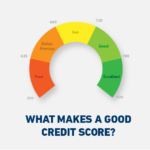Getting Prequalified for a Personal Loan
Getting prequalified for a personal loan is an important early step when seeking a new loan. Prequalification allows you to estimate how much you may be able to borrow without a hard inquiry on your credit report.
What is Prequalification?
When you get prequalified for a personal loan, the lender does a soft credit check to estimate the size of the loan you may qualify for. This does not affect your credit score.
Prequalification is not a guarantee of approval or specific loan terms, but it helps give you an idea of loan offers you may qualify for.
Soft Credit Check vs. Hard Pull
There are two main types of credit checks:
-
Soft credit check: A soft credit check, also called a soft inquiry, is when a lender checks your credit report without impacting your credit score. Soft checks are visible only to you and are commonly part of prequalification.
-
Hard pull: A hard inquiry looks at your full credit report and can lower your credit score by a few points. Hard pulls are done once you formally apply for a loan.
Only hard credit checks will ding your credit score, while soft checks done for prequalification won’t impact it.
There are several different types of personal loans to consider:
Secured vs Unsecured
-
Secured Loans – These require an asset like a car or home as collateral. The lender can seize the collateral if you default. Secured loans typically have lower interest rates.
-
Unsecured Loans – These don’t require collateral. They are riskier for lenders so interest rates are usually higher. Credit score and income are bigger factors for approval.
Fixed vs Variable Interest Rates
-
Fixed Rate Loans – These lock in an interest rate for the full loan term. Your monthly payment amount stays the same.
-
Variable Rate Loans – These have interest rates tied to an index like the prime rate. If the index goes up, your monthly payment amount increases.
Banks vs Credit Unions vs Online Lenders
-
Banks – Large national banks may offer competitive rates but can have stricter approval criteria. Local banks and credit unions may provide more flexible options.
-
Credit Unions – Credit unions are non-profit and member-owned. They may offer lower rates and fees compared to banks. Loan options can vary greatly by credit union.
-
Online Lenders – Online lenders like SoFi, Earnest and Lightstream provide easy online applications. Interest rates may be competitive but fees can sometimes be high. Approval can be easier for those with good credit and income.
Personal Loan Requirements
Most lenders will have a minimum set of requirements needed to qualify for a personal loan. Meeting these requirements helps improve your chances of getting approved. Here are some of the most common personal loan requirements to be aware of:
Minimum Credit Score
Your credit score gives lenders an indication of how reliably you have repaid debts in the past. For a personal loan, many lenders look for a minimum credit score in the mid-600s, though some may accept scores as low as 600. The higher your credit score, the better your chances of qualifying and getting a lower interest rate.
Income Requirements
Lenders want to see that your income is sufficient to make the monthly payments on the loan. Many have a minimum income threshold, often around $2,000 per month. Proof of higher income, through pay stubs or tax returns, can help improve your chances of approval.
Debt-to-Income Ratio
Your debt-to-income ratio compares your monthly debt payments to your monthly gross income. Most lenders want to see a ratio of 36% or less. The lower your ratio, the more favorably lenders will view your ability to take on and repay additional debt.
Employment History
Having steady employment and income will be important in demonstrating your ability to repay the loan. Many lenders prefer to see at least 1-2 years of consistent employment history on your application.
Credit History Length
In addition to your credit score, lenders will look at the length of your credit history. In general, a longer credit history demonstrates better management of credit. Many lenders prefer 3-5 years of established credit history.
Collateral
For large personal loans, some lenders may require collateral like a car or property to secure the loan in case of default. Not all personal loans require collateral, but it can help with approval chances if needed.
Co-signer
If you do not meet all of the eligibility criteria, having a co-signer with good credit may help you qualify and get better terms. The co-signer takes on equal responsibility for repaying the loan if you default.
Applying for a personal loan online can be a convenient and efficient process. Here’s a step-by-step guide to help you through the online application process:
Step 1: Research Lenders
Start by researching reputable online lenders. Compare interest rates, loan terms, and customer reviews to find a lender that best suits your needs. Ensure the lender is legitimate and has a secure online platform.
Step 2: Check Your Credit Score
Before applying, check your credit score. Many online lenders will provide information on the minimum credit score they require. Knowing your credit score will give you an idea of the loan terms you may qualify for.
Step 3: Gather Necessary Information
Be prepared to provide personal and financial information. Common documents and details needed include proof of identity (such as a driver’s license or passport), proof of income (pay stubs or tax returns), employment details, and information about your current debts.
Step 4: Use Online Loan Calculators
Most online lenders offer loan calculators on their websites. Use these tools to estimate your potential monthly payments based on the loan amount, interest rate, and term. This can help you determine the affordability of the loan.
Step 5: Prequalification
Many online lenders offer a prequalification process. Fill out a prequalification form with basic information, and the lender will provide you with an estimate of the loan amount and interest rate you may qualify for. This step usually involves a soft credit inquiry that won’t impact your credit score.
Step 6: Start the Application
Once you’ve chosen a lender and are ready to proceed, start the official online application. This may involve creating an account on the lender’s website or logging in if you already have one.
Step 7: Complete the Application
Fill out the online application form with accurate and up-to-date information. Be prepared to provide details about your income, employment, housing, and other relevant information. Take your time to ensure accuracy.
Step 8: Upload Documents
Some lenders may require you to upload supporting documents. Scan or take clear photos of the necessary documents, such as proof of income and identification, and upload them securely through the lender’s online portal.
Step 9: Review Loan Terms
Once your application is submitted, the lender will review it and provide you with the loan terms, including the interest rate, loan amount, and repayment terms. Carefully review these terms before proceeding.
Step 10: Accept the Loan Offer
If you are satisfied with the terms, accept the loan offer online. This may involve electronically signing the loan agreement. Ensure you understand the repayment schedule and any associated fees.
Step 11: Receive Funds
After accepting the loan offer, the lender will typically disburse the funds directly into your bank account. The time it takes for the funds to be deposited can vary, so check with the lender for specific details.
Step 12: Repay the Loan
Adhere to the agreed-upon repayment schedule. Set up automatic payments if available to ensure timely repayments and avoid any late fees.




